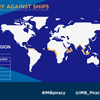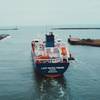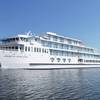Safety Program for Commercial Fishing Vessels
The Chesapeake Marine Training Institute (CMTI) offers a maritime safety program specifically for commercial fishing vessels.
“Since its inception, hundreds of boats and crew members have completed the program and the demand just keeps increasing,” said John O’Leary, maritime safety instructor for CMTI and the head of the safety and survival program. “In an industry that is already struggling, the program is becoming increasingly requested and thanks to the funding of the insurance companies, we can continue to grow and increase its numbers.” This program is offered by Sunderland Marine Mutual Insurance Company, Ltd through Brown and Brown Flagship in a joint effort to reduce casualties.
Established in 2005, the program is offered to commercial fishing vessels and its owners, on a volunteer basis. In 2008, over 100 vessels and crews completed the program. Initially available in the mid-Atlantic region, it is now available for commercial fishing vessels from North Carolina all the way to Cape May, New Jersey. According to Chris Burns, executive vice-president and general manager of Brown & Brown Flagship, “We are fully invested in this program. A safer crew makes for a safer vessel and it is a win-win situation for everyone. It’s clear that fewer accidents equal less loss of life and property equal lower claims equal lower insurance costs to the vessel, etc… the list goes on. It’s simply a benefit to everyone involved.”
Beyond basic United States Coast Guard requirements for onboard safety equipment and its various uses, there is no required safety program that covers onboard fires, flooding, electrical/fueling accidents, mayday calls, and survival and rescue tactics, among many. The U.S. Coast Guard does require that all fishing vessels have a safety drill once a month but since these drills are not monitored nor do they require a written record, many captains acknowledge that with a crew already under the stress of long hours and quotas to meet, this is often overlooked and/or outright ignored.
This CMTI safety program is different in many ways. First, it is conducted when a vessel is in port so there are no other distractions. After an initial safety orientation of approximately six hours that includes onboard fire, flood, use of all vessel safety equipment, mayday protocol, fuel shut off valves, circuit breakers, survival suits, life rafts/EPERB deployment and more, additional drills specific to any number of topics, such as fire drills, are performed every 30 – 60 days when a vessel in port. O’Leary is currently handling all orientations and follow-up drills but as the demand increases, he is seeking to expand the program so that more crews can be trained.
(www.flagshipgroup.com)













